|
|
LogisticsLab/DLP is intended for solving discrete single-source location problems, specifically (capacitated and uncapacitated) Warehouse Location Problems, Covering Location Problems, Maximal Covering Problems, p-median and p-centre problems. It is always assumed that a demand node can only be supplied from one location at a time (single-sourcing). Warehouse Location Problems are discrete location problems where both fixed location costs and variable transport costs are included in the location decision. There is a set of potential locations whose fixed costs are known. For the demand nodes, the demands are available. Furthermore, the variable transport costs between the potential locations and the de-mand nodes are also available. The objective is to minimise the sum of the transportation costs and the fixed costs of building and running warehouses by deciding which warehouses are established and which customer is delivered by which warehouse. The covering location problem seeks to find the minimum number of locations (or the minimum of their operating costs) and their optimal locations to cover the demand within a specified area (diame-ter based on distances, times, service level). With Maximal Covering Problems, the maximum covered demand of the destinations has to be found subject to an upper bound of locations or their operating costs. It is worth mentioning that there is usually no single-source constraint in the coverage problem. This means that a destination can be covered by more than one location. If this is the case internally in LogisticsLab/DLP, the nearest location is selected and displayed in the solution. 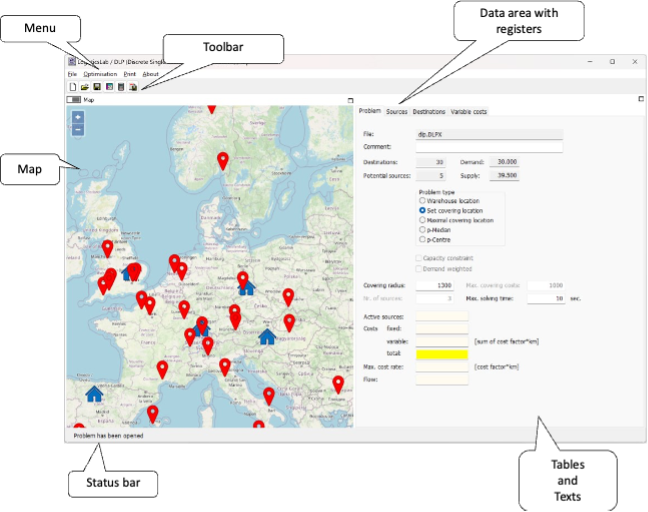
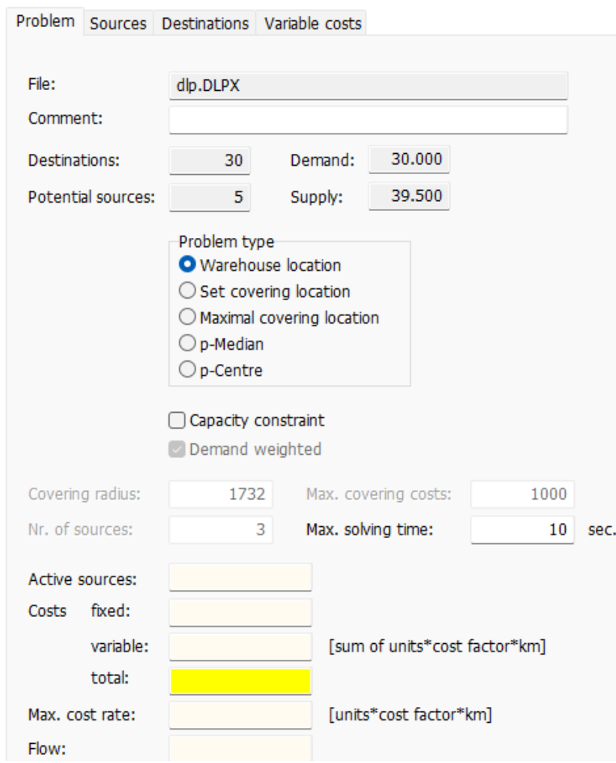
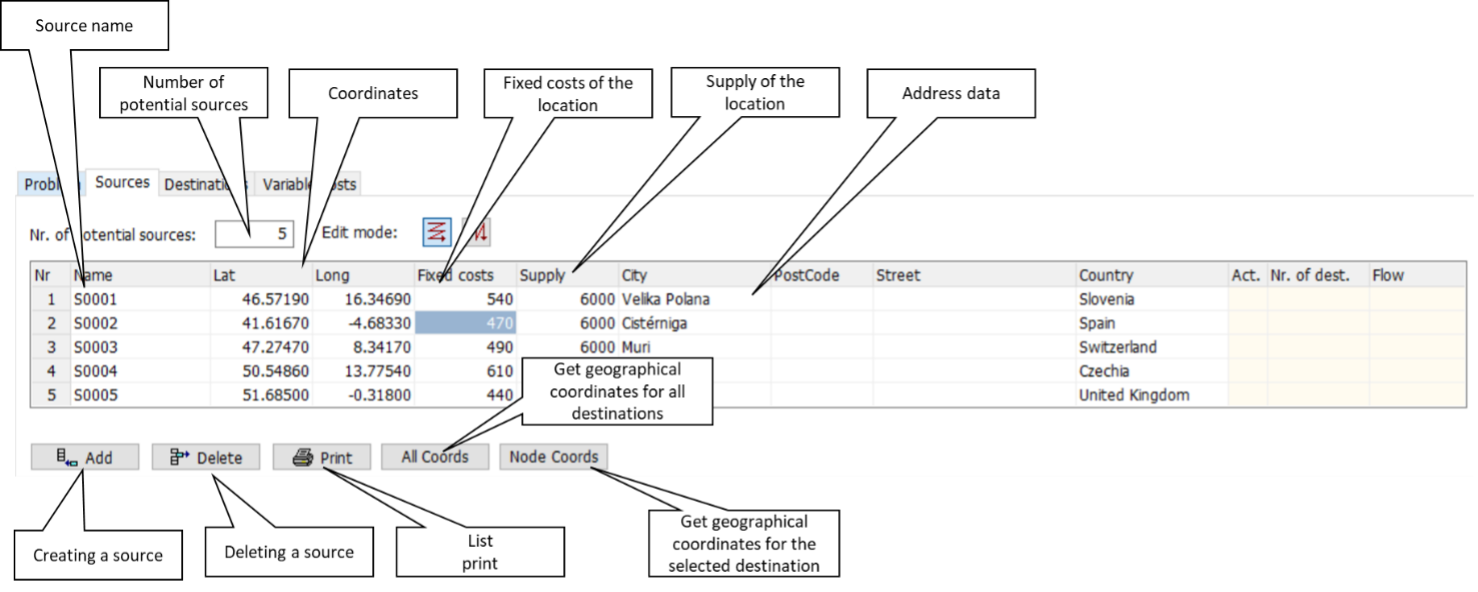


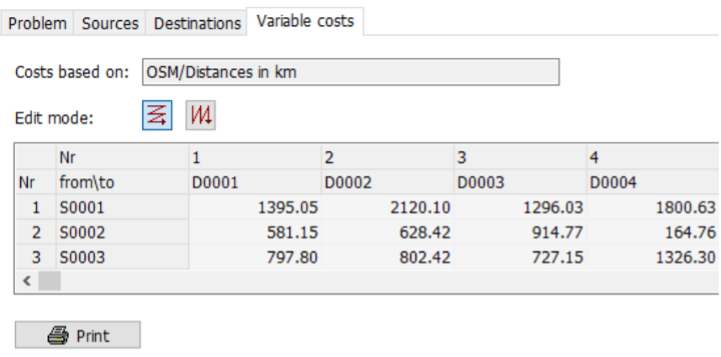
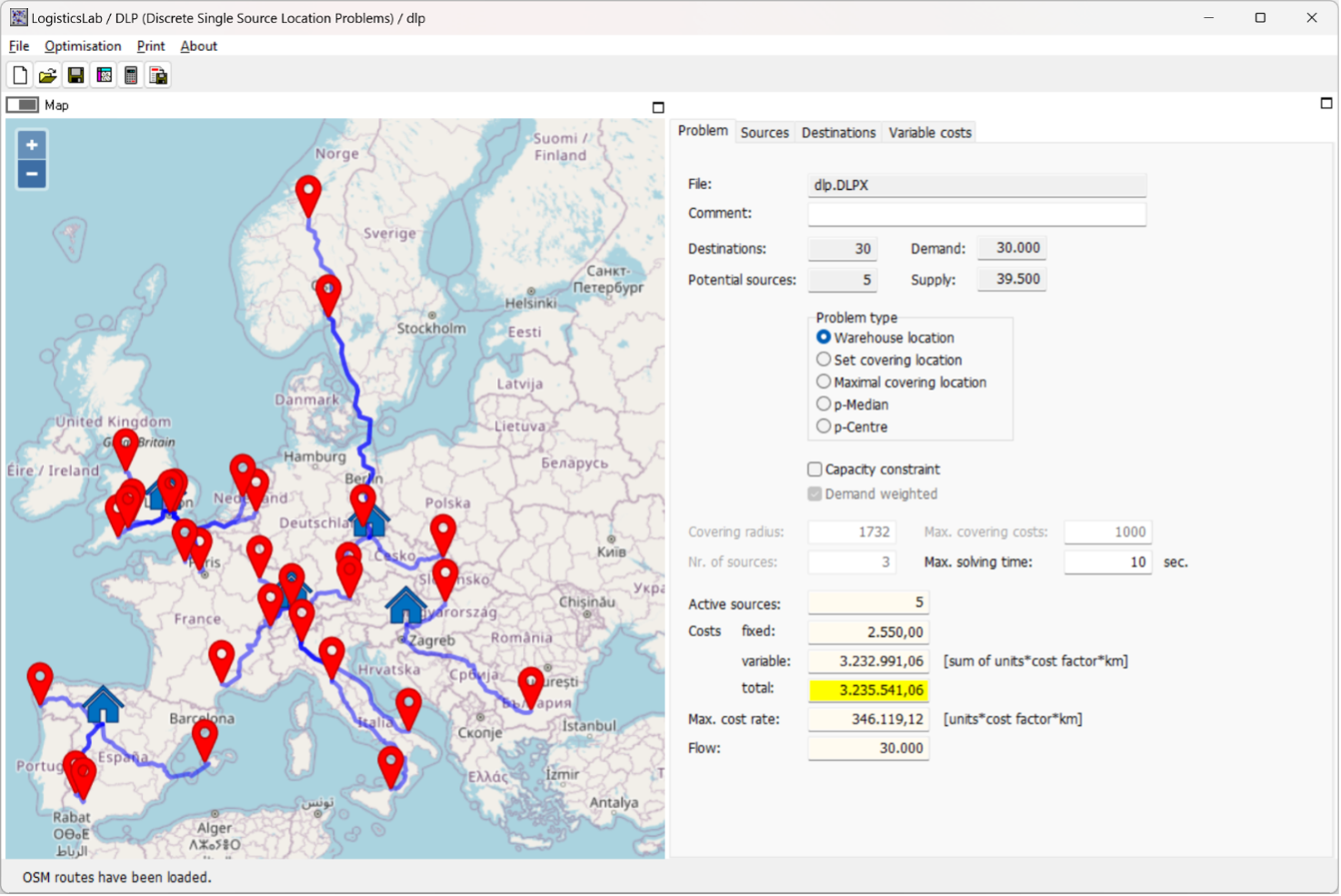
|